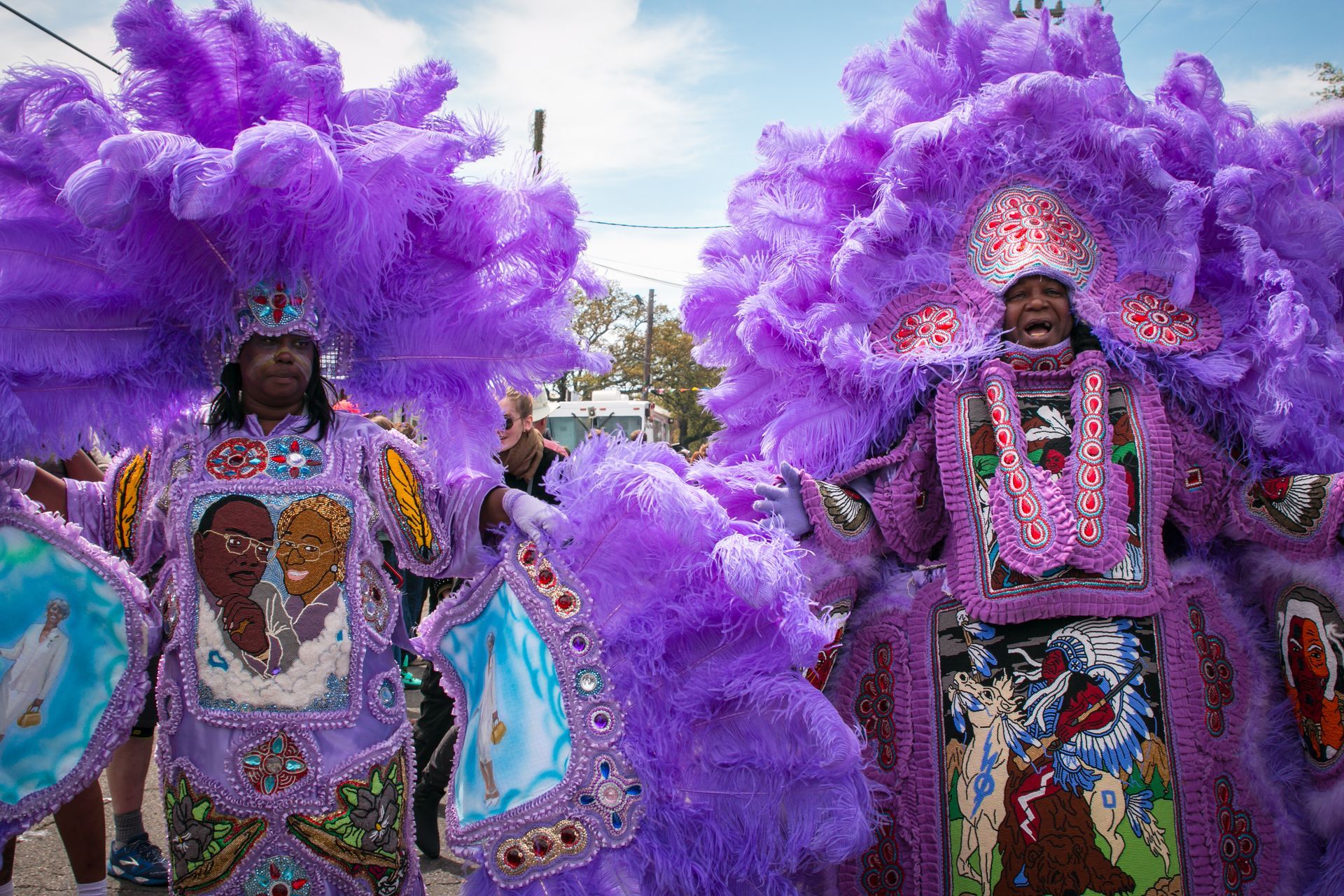Blog

Next Month, embark on a soul-stirring journey to the heart of New Orleans—the French Quarter Fest . From the lively music that echoes through historic streets to the tantalizing aromas wafting from food stalls, every moment is a celebration of Louisiana’s vibrant culture. The Music: French Quarter Fest 270 acts graced 20 stages across the French Quarter, creating an electrifying atmosphere. Legends and rising stars alike took the spotlight. First-time performers like The Soul Rebels with Big Freedia , Ani DiFranco , and Samantha Fish left us spellbound. Returning favorites— Tank and the Bangas , John Boutte , Sweet Crude , and Robin Barnes and the Fiya Birds —reminded us why we adore this festival. The Food: Over 60 food vendors tantalized our taste buds, offering a culinary journey through New Orleans’ flavors. Addis Nola , known for their Ethiopian cuisine, served up aromatic spices and hearty stews. Vaucresson’s Sausage Co. delighted us with their Creole sausages, a true taste of Louisiana. Ajun Cajun transported us to the bayou with their gumbo and crawfish étouffée. And let’s not forget the iconic Miss Linda the Yakamein Lady , dishing out her legendary yakamein (a.k.a. “Old Sober”)—the ultimate New Orleans hangover cure. Private Tours with Michaela To explore New Orleans like a true local, we booked a private driving tour with Michaela from Michaela’s Tours . As a multi-generational New Orleans native, Michaela’s love for the city shines through. Here are some of the tours she offers: Highlights of New Orleans : A curated driving tour focusing on the history, architecture, and culture of the French Quarter and the Garden District. History of New Orleans : Dive deep into over 300 years of living history, exploring the city’s diverse heritage. New Orleans & Airboat Swamp Tour : Combine historic New Orleans with the mystical swamps of south Louisiana. City and Exclusive Evergreen Plantation Tour : Explore the most intact plantation complex in the South, complete with 22 slave cabins. Whether you’re a first-time visitor or a seasoned traveler, Michaela’s tours offer an unforgettable experience. Book your tour today and let her show you the magic of this incredible city.

The Mardi Gras Indians are an important part of the cultural fabric of New Orleans, with a history that dates back over 200 years. The origins of the Mardi Gras Indians are rooted in the city’s African American community, and the tradition has its roots in the deep-seated history of slavery and oppression in the United States. In the late 18th and early 19th centuries, many slaves in New Orleans were allowed to congregate in open spaces on Sundays, which were often referred to as “Congo Square.” These gatherings were one of the few opportunities for slaves to express themselves through music and dance, and the tradition of the Mardi Gras Indians can be traced back to these early roots. The Mardi Gras Indian tradition began to take shape in the mid-19th century, when Native American tribes were often romanticized in popular culture. Many African Americans in New Orleans began to identify with the strength and resilience of Native American tribes, and the tradition of creating elaborate, hand-sewn suits and performing dances and songs in the streets began to take shape. Over time, the tradition of the Mardi Gras Indians became more formalized, with tribes adopting names and leaders, and competing against one another in elaborate performances on Mardi Gras day. The suits worn by the Indians are often elaborate and intricate, with feathers, beads, and sequins being a common theme. One of the most important figures in the history of the Mardi Gras Indians is Big Chief Tootie Montana, who led the Yellow Pocahontas tribe for over 50 years. Montana was known for his elaborate suits and his fierce commitment to the culture and history of the Mardi Gras Indians. He passed away in 2005, but his legacy lives on through the many artists and performers who continue to carry on the tradition. Another important figure in the world of Mardi Gras Indians is Big Queen Cherice Harrison-Nelson of the Guardians of the Flame tribe. Harrison-Nelson is a renowned artist, educator, and performer who has dedicated her life to preserving the culture and history of the Mardi Gras Indians. She is known for her stunning suits and her passionate commitment to social justice and community building. The Mardi Gras Indian tradition has faced many challenges over the years, including discrimination, poverty, and violence. Despite these challenges, the tradition has persevered, and today the Mardi Gras Indians are an important part of the cultural landscape of New Orleans. In recent years, the Mardi Gras Indian tradition has begun to attract a wider audience, with tourists and visitors from around the world coming to witness the elaborate performances and stunning suits. While some have criticized the commercialization of the tradition, many in the Mardi Gras Indian community see this as an opportunity to share their culture and history with a wider audience. In addition to their performances on Mardi Gras day, the Mardi Gras Indians are also involved in a variety of community outreach programs, including mentoring and education initiatives aimed at preserving the culture and history of the tradition. The Mardi Gras Indian tradition is a living, breathing part of New Orleans’ cultural heritage. Each year, the tribes come together to create stunning works of art that reflect their history and their unique identity. Whether you are a lifelong resident of New Orleans or a visitor to the city, the Mardi Gras Indians are a must-see spectacle that is sure to leave a lasting impression.
